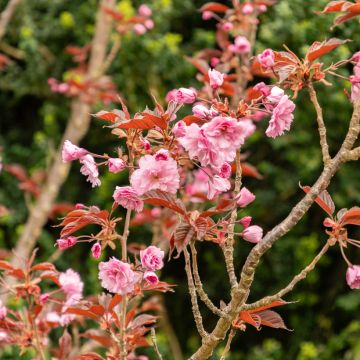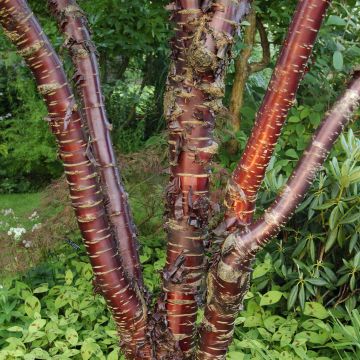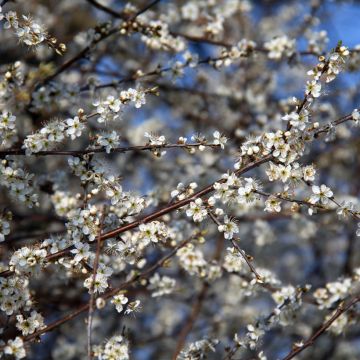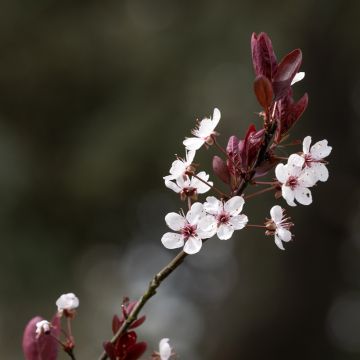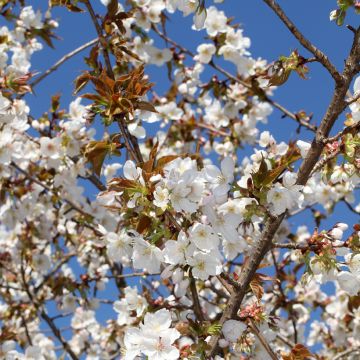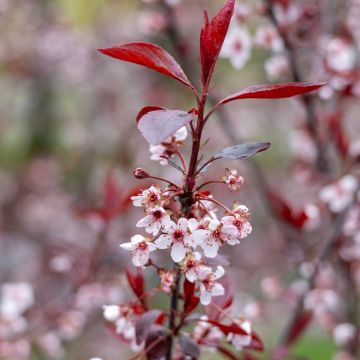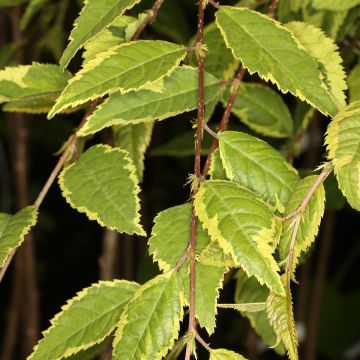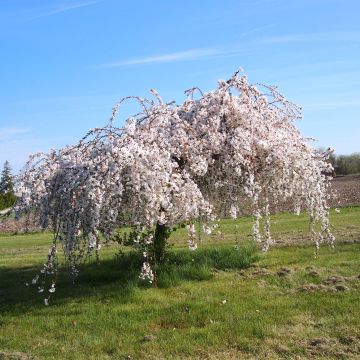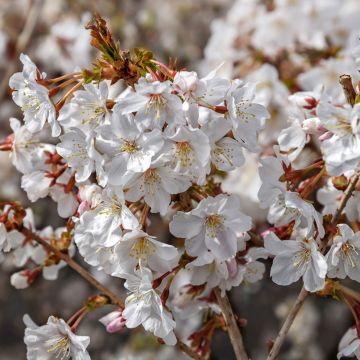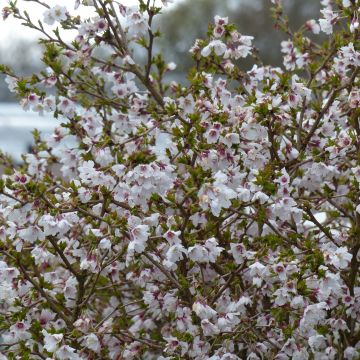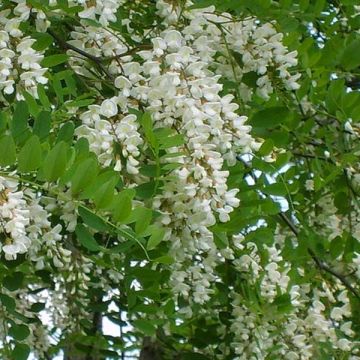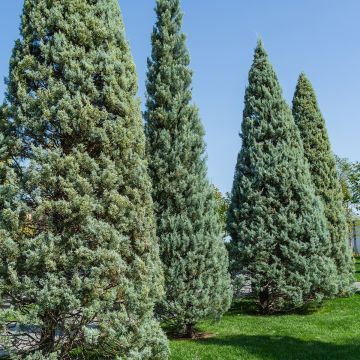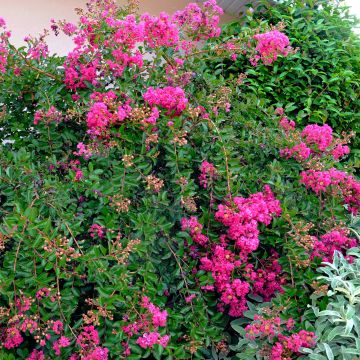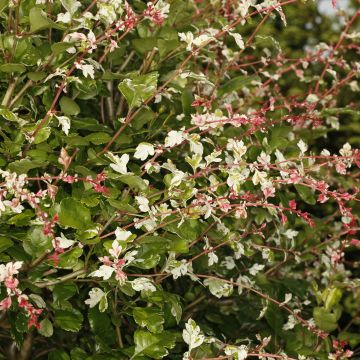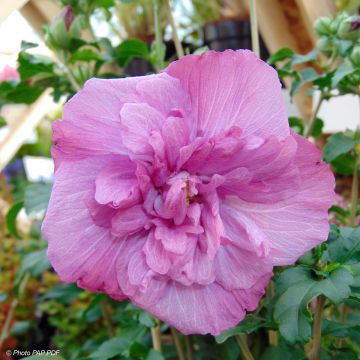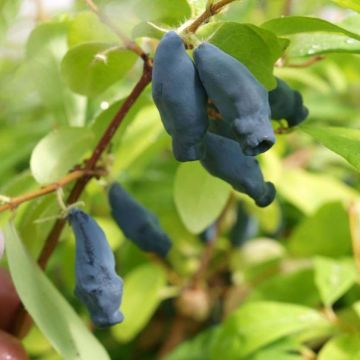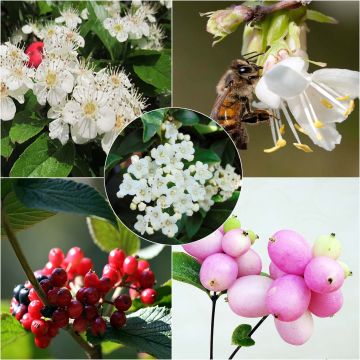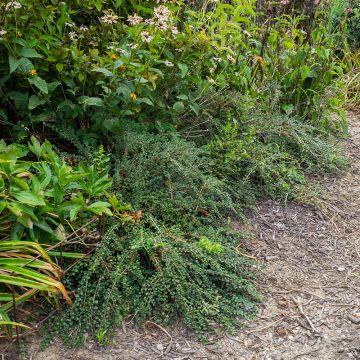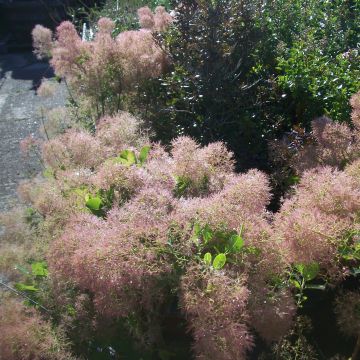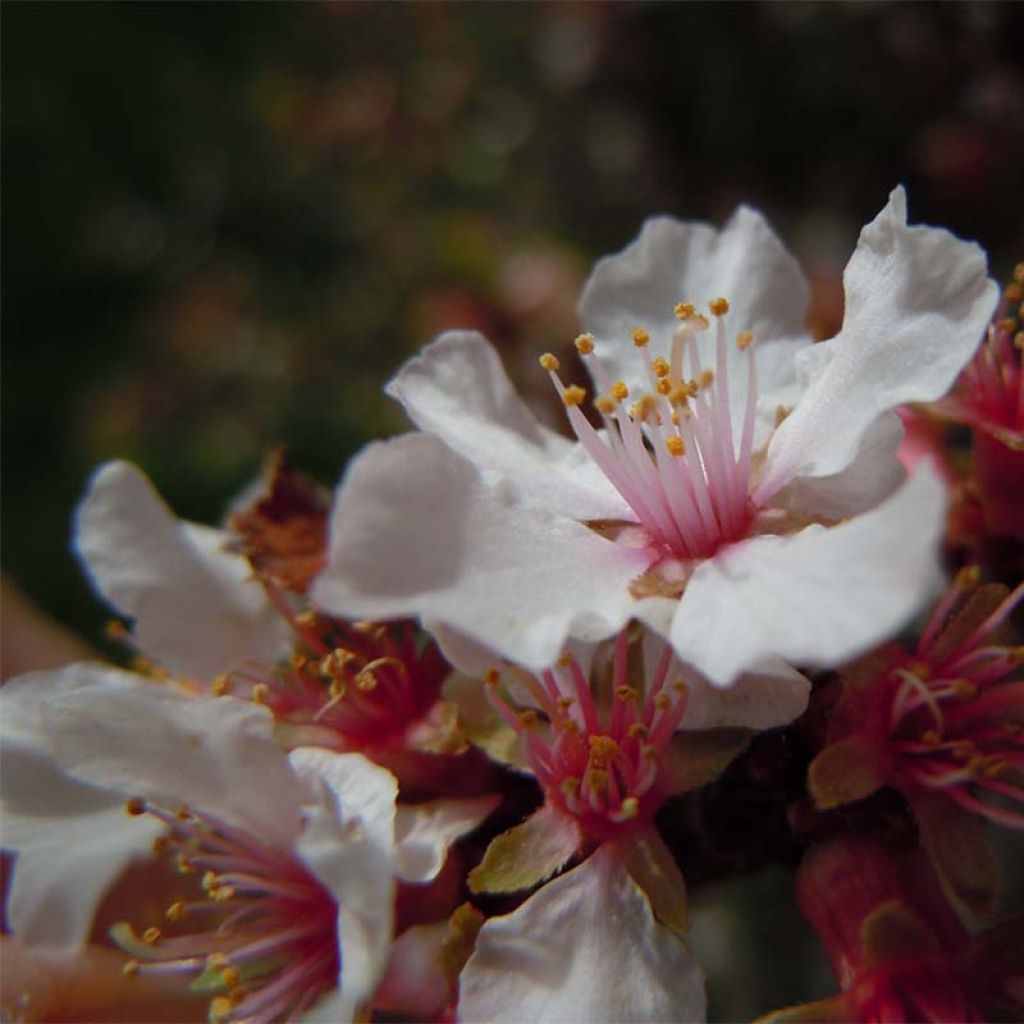

Prunus tomentosa - Nanking Cherry
Prunus tomentosa - Nanking Cherry
Prunus tomentosa
Nanking Cherry, Korean Cherry, Manchu Cherry, Downy Cherry, Shanghai Cherry, Ando Cherry, Mountain Cherry, Chinese Bush Cherry, Chinese Dwarf Cherry, Chinese Sour Cherry
Great plant, well packaged. I put them in the greenhouse as soon as they arrived. I highly recommend it, and it's not the first time I've ordered from Promesse de Fleurs.
michel, 21/02/2024
This item cannot be shipped to the selected country
Delivery charge from €5.90
Delivery to Corse prohibited
More information
Schedule delivery date,
and select date in basket
This plant carries a 24 months recovery warranty
More information
We guarantee the quality of our plants for a full growing cycle, and will replace at our expense any plant that fails to recover under normal climatic and planting conditions.
From €5.90 for pickup delivery and €6.90 for home delivery
Express home delivery from €8.90.
Delivery to Corse prohibited: UE law prohibits the import of this plant from mainland France to Corse as part of the fight against Xylella fastidiosa. Please accept our sincere apologies.
More information

Does this plant fit my garden?
Set up your Plantfit profile →
Description
The Prunus tomentosa, better known as Ragouminier, Ragoumier or Nanking cherry, is a self-pollinating small fruit bush, of ornamental value. On its branches covered in bristles, numerous small white flowers tinged with pink bloom in spring, before the appearance of the leaves. The small bright red fruits gather in small clusters, ripening in the heart of summer. These small cherries, which make excellent jams, reveal an original and sweet flavour. A further asset of this bush is its beautiful golden autumn foliage. With rapid growth, the Ragoumier is a sturdy plant, tolerating occasional drought, but also intense cold. It can be planted in a free or fruit hedge, but also in an orchard, or even in a large pot on the terrace.
The Prunus tomentosa, from the large rose family, is known in various regions as the Canadian cherry, dwarf Canadian cherry, Canadian minel, Manchurian cherry or even Nanking cherry, named after the eponymous Chinese city. It originates from northern and western China, Mongolia, Korea, Tibet and northern India. This fast-growing bush matures in 5 years, developing a very short trunk covered with a glabrous and coppery black bark, topped with a bushy, slightly spread out crown, with a regular habit. At maturity, this small cherry tree will reach on average 1.75 m (5 ft 8 in) in all directions, sometimes more, depending on growing conditions. The hairy branches covered are one of the distinctive characteristics of this species. Before the appearance of the young leaves, a profusion of small flowers bloom in small clusters. They are single, with 5 white petals, pink in the centre, nectar-bearing, 1.5 cm (0.6 in) in diameter. The flowering is followed by the formation of small petiole-free, fleshy, and vibrant red cherries. At ripeness in summer, the fruits are edible, slightly sweet in taste but a little tart. They can be eaten fresh or used in the preparation of jellies, jams, pastries... The foliage is deciduous, the leaves are alternate, measuring 2 to 7 cm (0.8 to 2.8 in) in length, ovate, bordered with irregular indentations. The lamina is rough, covered in hair and dark green on top, lighter and tomentose underneath. The foliage turns a beautiful yellow in autumn.
This small tree is easy to grow and is only averse to very clayey and compact, calcareous, and excessively dry soil. It will naturally find its place in a free, flowering, rustic or fruit hedge. It will be comfortable in most of regions. For example, in a hedge or massif, it can be combined with other bushes with spring flowering, simultaneous or staggered such as the ornamental apple trees, flowering peaches, Prunus mahaleb, quinces, medlars, dogwoods, May berries, Chinese almond tree, hawthorns...It can also be grown in a large pot, but will then require regular watering and fertilisation to flower and fruit well.
Report an error about the product description
Prunus tomentosa - Nanking Cherry in pictures
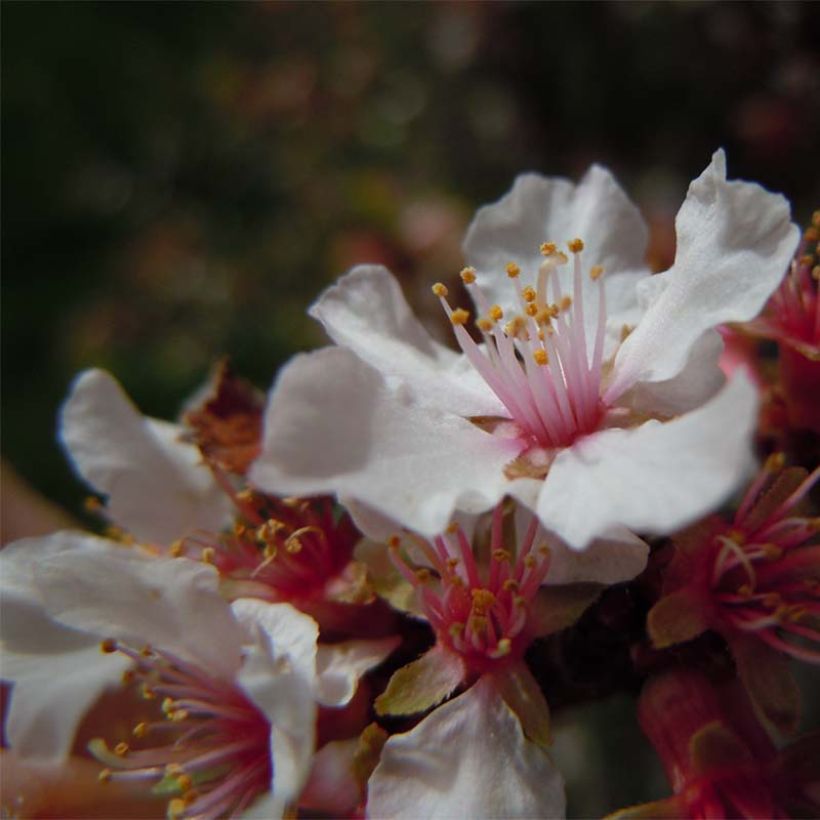

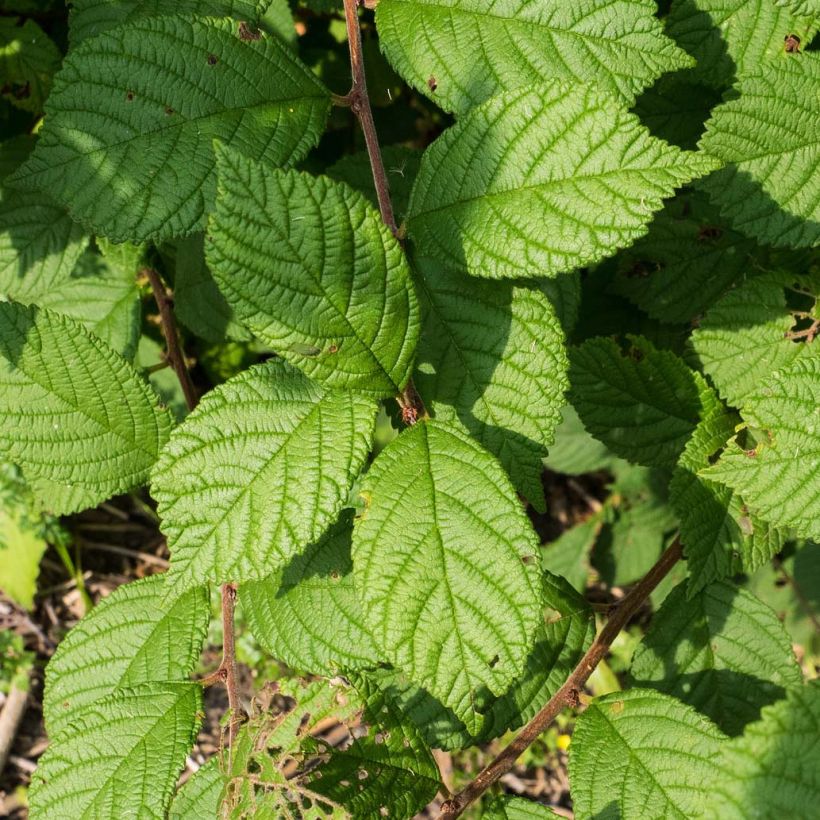

Plant habit
Flowering
Foliage
Botanical data
Prunus
tomentosa
Rosaceae
Nanking Cherry, Korean Cherry, Manchu Cherry, Downy Cherry, Shanghai Cherry, Ando Cherry, Mountain Cherry, Chinese Bush Cherry, Chinese Dwarf Cherry, Chinese Sour Cherry
Central Asia
Other Prunus
Planting and care
The Prunus tomentosa is planted in spring or autumn, depending on the climate. It adapts to a wide range of soils, as long as they are properly drained. Its preference is for sandy, loamy, slightly acidic to neutral soil. It nevertheless tolerates the moderate presence of limestone. Once established, it generally does without watering in summer, except if a drought period extends beyond a few weeks. Water regularly for the first two or three years to help it settle in. When planting, mix your soil with compost and coarse sand to a height of 50% if your soil is clayey. Dig a large planting hole. Every spring, apply a fertiliser for flowering bushes or small fruits. Beware of late frosts that could damage the early flowering. That iswhy it is preferable to place the prunus in a location somewhat sheltered from dry and cold winds.
Planting period
Intended location
Care
-
, onOrder confirmed
Reply from on Promesse de fleurs
Hedge shrubs
Haven't found what you were looking for?
Hardiness is the lowest winter temperature a plant can endure without suffering serious damage or even dying. However, hardiness is affected by location (a sheltered area, such as a patio), protection (winter cover) and soil type (hardiness is improved by well-drained soil).

Photo Sharing Terms & Conditions
In order to encourage gardeners to interact and share their experiences, Promesse de fleurs offers various media enabling content to be uploaded onto its Site - in particular via the ‘Photo sharing’ module.
The User agrees to refrain from:
- Posting any content that is illegal, prejudicial, insulting, racist, inciteful to hatred, revisionist, contrary to public decency, that infringes on privacy or on the privacy rights of third parties, in particular the publicity rights of persons and goods, intellectual property rights, or the right to privacy.
- Submitting content on behalf of a third party;
- Impersonate the identity of a third party and/or publish any personal information about a third party;
In general, the User undertakes to refrain from any unethical behaviour.
All Content (in particular text, comments, files, images, photos, videos, creative works, etc.), which may be subject to property or intellectual property rights, image or other private rights, shall remain the property of the User, subject to the limited rights granted by the terms of the licence granted by Promesse de fleurs as stated below. Users are at liberty to publish or not to publish such Content on the Site, notably via the ‘Photo Sharing’ facility, and accept that this Content shall be made public and freely accessible, notably on the Internet.
Users further acknowledge, undertake to have ,and guarantee that they hold all necessary rights and permissions to publish such material on the Site, in particular with regard to the legislation in force pertaining to any privacy, property, intellectual property, image, or contractual rights, or rights of any other nature. By publishing such Content on the Site, Users acknowledge accepting full liability as publishers of the Content within the meaning of the law, and grant Promesse de fleurs, free of charge, an inclusive, worldwide licence for the said Content for the entire duration of its publication, including all reproduction, representation, up/downloading, displaying, performing, transmission, and storage rights.
Users also grant permission for their name to be linked to the Content and accept that this link may not always be made available.
By engaging in posting material, Users consent to their Content becoming automatically accessible on the Internet, in particular on other sites and/or blogs and/or web pages of the Promesse de fleurs site, including in particular social pages and the Promesse de fleurs catalogue.
Users may secure the removal of entrusted content free of charge by issuing a simple request via our contact form.
The flowering period indicated on our website applies to countries and regions located in USDA zone 8 (France, the United Kingdom, Ireland, the Netherlands, etc.)
It will vary according to where you live:
- In zones 9 to 10 (Italy, Spain, Greece, etc.), flowering will occur about 2 to 4 weeks earlier.
- In zones 6 to 7 (Germany, Poland, Slovenia, and lower mountainous regions), flowering will be delayed by 2 to 3 weeks.
- In zone 5 (Central Europe, Scandinavia), blooming will be delayed by 3 to 5 weeks.
In temperate climates, pruning of spring-flowering shrubs (forsythia, spireas, etc.) should be done just after flowering.
Pruning of summer-flowering shrubs (Indian Lilac, Perovskia, etc.) can be done in winter or spring.
In cold regions as well as with frost-sensitive plants, avoid pruning too early when severe frosts may still occur.
The planting period indicated on our website applies to countries and regions located in USDA zone 8 (France, United Kingdom, Ireland, Netherlands).
It will vary according to where you live:
- In Mediterranean zones (Marseille, Madrid, Milan, etc.), autumn and winter are the best planting periods.
- In continental zones (Strasbourg, Munich, Vienna, etc.), delay planting by 2 to 3 weeks in spring and bring it forward by 2 to 4 weeks in autumn.
- In mountainous regions (the Alps, Pyrenees, Carpathians, etc.), it is best to plant in late spring (May-June) or late summer (August-September).
The harvesting period indicated on our website applies to countries and regions in USDA zone 8 (France, England, Ireland, the Netherlands).
In colder areas (Scandinavia, Poland, Austria...) fruit and vegetable harvests are likely to be delayed by 3-4 weeks.
In warmer areas (Italy, Spain, Greece, etc.), harvesting will probably take place earlier, depending on weather conditions.
The sowing periods indicated on our website apply to countries and regions within USDA Zone 8 (France, UK, Ireland, Netherlands).
In colder areas (Scandinavia, Poland, Austria...), delay any outdoor sowing by 3-4 weeks, or sow under glass.
In warmer climes (Italy, Spain, Greece, etc.), bring outdoor sowing forward by a few weeks.

































